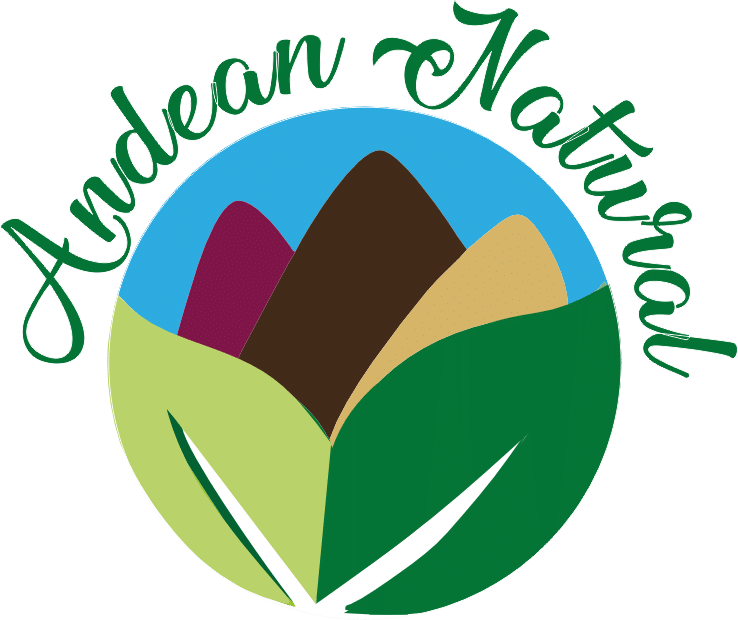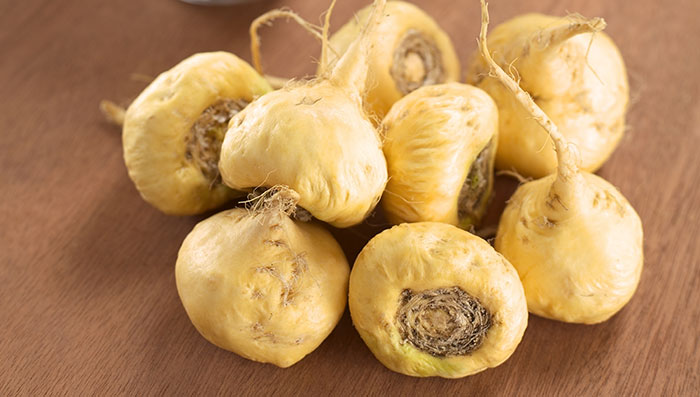The Maca of the Incas
Maca is an authentic gift from the gods, this superfood is valued thanks to its high amount of nutrients. In addition to being a revitalize for the mind and body, it is considered to elevate virility. Numerous studies have proven their positive effects on the spermatogenesis of many species.
This herbaceous plant is cultivated above 4,000 masl, although it is cultivated thousands of years ago in the Peruvian Andes, little is known of its true origin. Nowadays it is a very appreciated food, it is consumed in breakfasts, in drinks accompanied by quinoa, oats and other cereals.
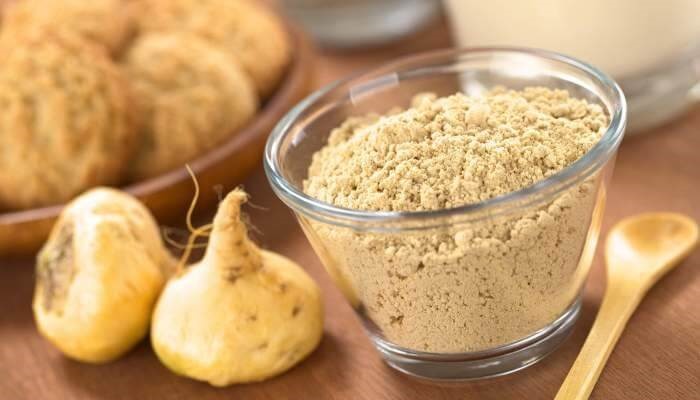
maca roots and powder
Maca is consumed fresh and dehydrated, thus preserving its nutritional properties, an ideal complement to a balanced diet rich in proteins. Although with a composition similar to cereals (60% carbohydrates and 8.5% fiber) it has a higher percentage of protein (18%), it also has 7 of the 8 essential amino acids for the use of nutrients.
Its content in fatty acids help to reduce cholesterol and prevent cardiovascular diseases making this a prodigious food, naturally enriched with minerals important for the growth of bones and production of hormones. Maca is also a source of vitamins B1, B2, C and E, the latter known to protect the skin.
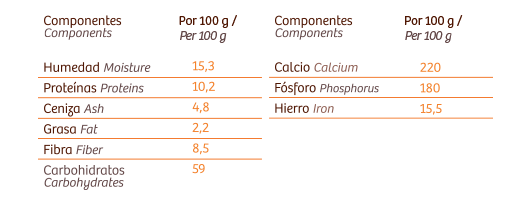
nutritional value of maca
History of Maca
Maca is a root vegetable grown in the Peruvian Andes. It was sacred to the Incas and has been used as a food and medicine in the Andean mountains of Peru for thousands of years. It is well known for its ability to enhance strength and endurance. In fact, Inca warriors would often consume maca before long journeys and battles.
The maca was of great importance in the pre-Inca period and was one of the first roots that the Peruvian people consumed. During the Inca period not only became the food of the nobles (high society) but also served as an offering to the gods which they gave corn, potatoes and maca.
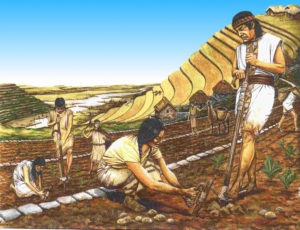
Incas cultivating maca
When they arrived, the Spaniards were surprised when they made their visit to chinchaycocha (4,150 m.a.s.l.) hearing about the surprising properties of a root that the natives called maca.
Formerly it was considered as a gift from the gods.
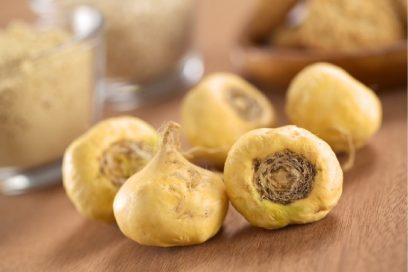
Currently MACA has been declared by Peru, as one of its flagship products, as of July 28, 2004.
Origin of Maca
It is cultivated at elevations between 3,800 to 4,500 m (12,500–14,800 ft) a.s.l. It is resistant to frost, hail and snowfalls, typical climatological factors of the High Andean mountains and the main reason why it is so powerful.
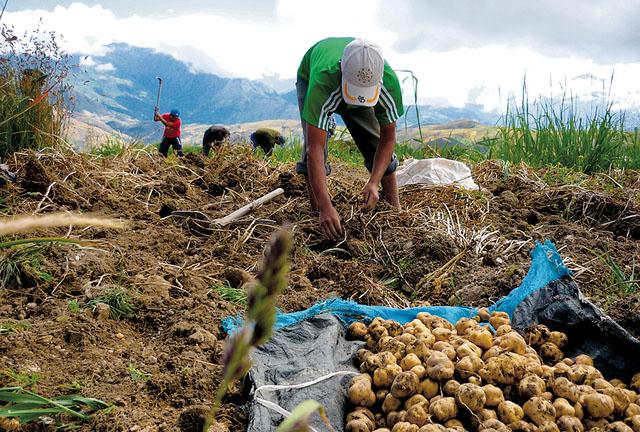
maca cultivation
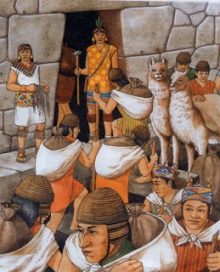
Inca Culture
The tuberous root was domesticated by the Pumpush people of Junín, a Pre-Inca Culture, back in the 700 years BC. They lived on the banks of Lake Chinchaycocha, as evidenced by the remains found in the Pachamachay caves in the Province of Junín, that they had this root as their main food and source of subsistence.
The story relates that the Incas fed their troops with maca, to potentiate the strength of their warriors.
On the other hand, it was also recognized as an aphrodisiac.
They say that at the arrival of the Spaniards, the animals brought from Spain did not reproduce normally in that altitude, the natives of that area told the Spaniards to feed their animals with maca, with which they achieved that their animals reach a normal level of reproduction. So recognized was this story that during the first hundred years of the colonial era, the Commander demanded as part of the tribute: Maca.
Geology study
Geologists indicate that maca is a plant that consumes in great majority the nutrient of the soils where it is cultivated, to the point of leaving it sterile, declarations that the farmers of the Andes confirm. That is why cultivation is done in virgin or lands that have been left to rest for a period of at least 4 or 5 years, when the soils have regained the minerals of the environment and ichu or grass has grown on it.
Overview
As we can see, maca is a plant with beneficial properties recognized since pre-Inca times. It adapted to its environment, developing a self-defense that allows it to survive in the cold Peruvian Andes and is a great absorber of the nutrients of the earth, hence the secret of its high nutritional level.
